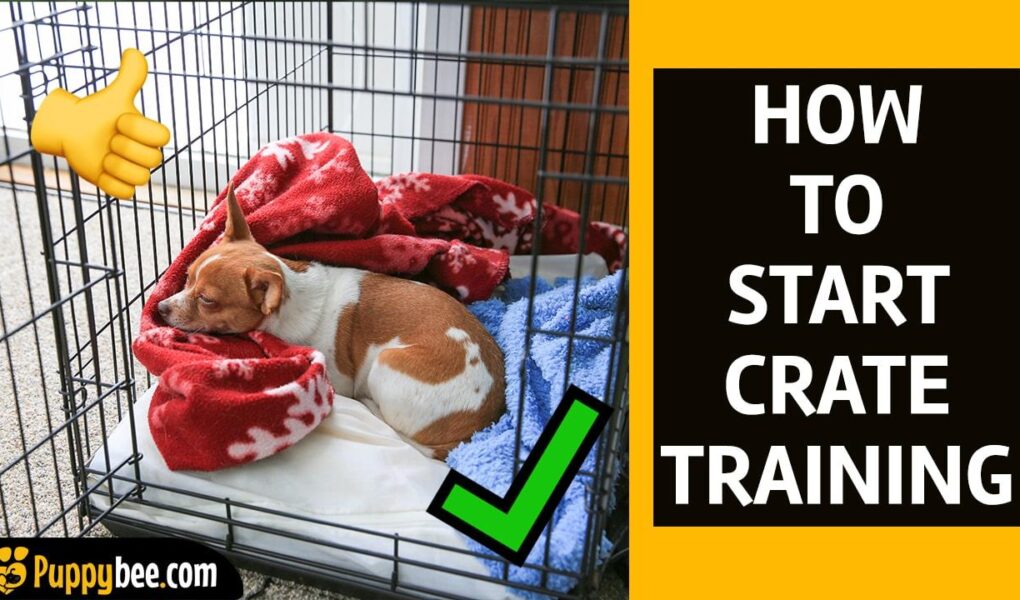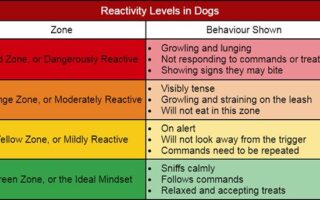Bringing a puppy into your home is a joyous occasion filled with playful antics and boundless energy. But with all the excitement comes the responsibility of teaching your new furry friend the ropes of household life. Among the many tools at your disposal, crate training stands out as a highly effective method for providing your puppy with a safe space while promoting good behavior and house training. This article delves into the best practices for crate training your puppy, offering insights and expert advice to help you create a positive, nurturing experience for both you and your pet. Whether you’re a first-time puppy parent or looking to refresh your training techniques, join us as we explore the art and science of crate training — ensuring that your new companion feels right at home, one cozy crate session at a time.
Table of Contents
- Understanding the Purpose of Crate Training for Your Puppy
- Choosing the Right Crate: Size, Type, and Location Considerations
- Establishing a Positive Crate Experience Through Effective Techniques
- Overcoming Common Challenges During the Crate Training Process
- Q&A
- Final Thoughts
Understanding the Purpose of Crate Training for Your Puppy
Crate training serves multiple essential functions that can benefit both you and your puppy. Primarily, it creates a safe haven for your pet, mimicking a den-like environment where they can feel secure and comfortable. This space reduces anxiety and helps your puppy learn to settle down on their own. When introduced correctly, the crate can also become a valuable tool for house training, teaching your pup to hold their bladder until they are let outside. The act of using a crate encourages routines, promoting a sense of structure in their daily life.
Moreover, crate training can play a pivotal role in managing your puppy’s behavior and preventing unwanted habits. By using the crate during times when you can’t supervise your puppy directly, you minimize opportunities for mischief and accidents in the house. This method can also help with separation anxiety by allowing your dog to learn that being alone for periods of time can be a normal part of life. To effectively harness the benefits of crate training, it’s vital to focus on positive reinforcement techniques that create a positive association with the crate, such as:
- Offering treats and praise when your puppy enters the crate
- Gradually increasing the time spent in the crate
- Using the crate during mealtime or playtime to foster a sense of belonging
| Crate Training Benefits | Description |
|---|---|
| Safe Space | Provides a secure environment for your puppy. |
| House Training | Aids in teaching your puppy to hold their bladder. |
| Behavior Management | Prevents unwanted behaviors when unsupervised. |
| Separation Training | Helps reduce anxiety by fostering independence. |
Choosing the Right Crate: Size, Type, and Location Considerations
When it comes to crate training your puppy, selecting the appropriate crate is essential for a smooth training experience. Begin by considering the size of your puppy. The crate should allow your pet to stand, turn around, and lay down comfortably without extensive space that might encourage them to use one corner as a bathroom. For growing puppies, adjustable crates can be a smart choice, as they allow you to modify the internal space according to your puppy’s size. Aim for the following dimensions when selecting a crate:
| Size Category | Recommended Crate Size |
|---|---|
| Small Breeds | 24 - 30 inches |
| Medium Breeds | 30 – 36 inches |
| Large Breeds | 36 – 42 inches |
Next, consider the type of crate that will best fit your lifestyle and the unique needs of your puppy. Options typically include wire crates, plastic carriers, and soft-sided crates. Each type has its advantages; wire crates provide ventilation and visibility, while plastic carriers offer a den-like environment for security. Also, think about the location of the crate in your home. Positioning the crate in a quiet but social area, like your living room, helps your puppy feel safe while still being part of family activities. Avoid placing the crate in isolated locations, as this can lead to anxiety. Instead, aim for a spot that allows your puppy to interact with family members while they adjust to their new environment.
Establishing a Positive Crate Experience Through Effective Techniques
Creating a positive atmosphere around your puppy’s crate is essential for successful crate training. Start by choosing the right crate size, ensuring it’s just large enough for your puppy to stand, turn around, and lie down comfortably. You can enhance the crate experience by making it cozy and inviting. Consider using soft bedding, a favorite toy, or a piece of your clothing to provide comfort. Additionally, gradual introduction to the crate is vital, allowing your puppy to explore it at their own pace. *Positive reinforcement* through treats, praise, and gentle encouragement can transform the crate into a safe haven rather than a confinement tool.
Establishing a routine will also aid in creating a positive association with the crate. Consistent feeding times, walks, and play sessions help your puppy anticipate crate time. Before placing your puppy inside, provide a calming command, like ”Go to your bed,” and reward them when they comply. Here are some techniques to amplify the positive experience:
- Avoid using the crate as punishment; this creates fear and anxiety.
- Keep the crate in a busy area; your puppy will feel included.
- Practice short sessions; gradually increase the duration as your puppy adjusts.
Tracking your puppy’s progress can also be beneficial. Below is a simple table to help you monitor key training milestones:
| Training Phase | Duration in Crate | Reinforcement Type |
|---|---|---|
| Initial Introduction | 5-10 minutes | Treats & Praise |
| Short Sessions | 15-30 minutes | Favorite Toy |
| Daily Routine | 1-2 hours | Calm Environment |
Overcoming Common Challenges During the Crate Training Process
Crate training can be a rewarding journey, but it’s not without its hurdles. One of the most common challenges is ensuring that your puppy feels at ease in their new environment. It’s important to avoid using the crate as a punishment, as this can foster anxiety and resistance. Instead, establish a positive association by rewarding your puppy with treats or praise when they enter the crate voluntarily. Gradually acclimate them by leaving the door open during the initial sessions and allowing them to explore their new space at their own pace. Consistency and patience are key; make the crate a cozy retreat by adding their favorite blanket or a toy to enhance their comfort.
Another frequent obstacle is dealing with nighttime whining or barking. This behavior often arises from separation anxiety or a desire for attention. To address this, set up a routine that includes several bathroom breaks before bed, ensuring your puppy’s needs are fully met. If your puppy continues to vocalize, consider the following strategies:
| Strategy | Description |
| Ignore the noise | Wait for quiet moments before addressing them to avoid reinforcing the behavior. |
| Provide a comfort item | A safe toy or a piece of your clothing can offer reassurance during the night. |
| Establish a consistent schedule | Having set feeding and potty times creates predictability and can reduce anxiety. |
By applying these tips and remaining consistent, you will create a safe and secure environment that your puppy will come to love, making the crate training process smoother for both of you.
Q&A
Q&A: The Best Way to Crate Train Your Puppy
Welcome to our insightful guide on crate training your puppy! Crate training is an essential part of raising a well-behaved dog. Let’s dive into some frequently asked questions to help you navigate this important process with ease and confidence.
Q: What is crate training, and why is it important?
A: Crate training involves teaching your puppy to see their crate as a safe haven. This technique helps with housebreaking, preventing destructive behavior, and offering a secure space for your furry friend when needed. A crate mimics a den, catering to your dog’s instinctive need for a small, den-like environment.
Q: How do I choose the right crate for my puppy?
A: Select a crate that is appropriately sized for your puppy. It should be large enough for them to stand, turn around, and lie down comfortably without too much extra space. If the crate is too big, your puppy might use one side as a bathroom. Consider collapsible models for convenience and portability.
Q: What’s the first step in crate training?
A: Introduce your puppy to the crate slowly. Start by placing it in a common area of your home. Leave the door open and encourage your puppy to explore it. Use treats and toys to create positive associations. Let them enter on their own; coaxing them too forcefully can make them hesitant.
Q: How do I encourage my puppy to enter the crate?
A: You can use treats, toys, and praise as incentives. Toss a favorite toy or treat inside and let your puppy go in to retrieve it. Make the experience pleasant and rewarding. You can also feed them meals in the crate to create a positive association.
Q: How long should I leave my puppy in the crate?
A: Initially, keep crate time short—about 10 to 15 minutes. Gradually increase the duration as your puppy becomes comfortable. Generally, a good rule of thumb is that puppies can hold their bladder for about one hour per month of age. For example, a 3-month-old puppy can stay in the crate for about 3 hours.
Q: What if my puppy cries or whines in the crate?
A: It’s common for puppies to express their discomfort. If your puppy whines, try to determine the cause. If they need to go outside, take them out. If they’re simply seeking attention, wait a moment before checking to avoid reinforcing that behavior. Be patient; consistency is key.
Q: How do I ensure my puppy feels secure in the crate?
A: Create a comfortable environment with soft bedding and a few favorite toys. You can also cover the crate with a light blanket to provide a den-like atmosphere. Ensure the crate is in a quiet part of the house, away from loud noises while still allowing your puppy to feel part of the family.
Q: When should I start crate training?
A: It’s best to begin crate training early, ideally as soon as you bring your puppy home. Starting young helps establish good habits and allows them to adapt more easily to the idea of their crate as a safe space.
Q: Can crates be used for long periods?
A: No, crates should not be used as a long-term solution for confinement. While they are great for short periods, puppies require socialization and exercise. Plan for regular breaks, playtime, and bonding to ensure a happy, well-adjusted puppy.
Crate training can be a rewarding experience for both you and your puppy when approached with patience and understanding. By using these techniques, you’ll help your puppy feel at home in their crate while fostering good behavior and a strong bond between you two. Happy training!
Final Thoughts
crate training your puppy can be a rewarding journey for both you and your furry companion. By understanding your puppy’s needs, utilizing positive reinforcement, and making the crate a safe haven, you can foster a sense of security and comfort for your puppy. Remember, patience is key; every pup learns at their own pace. As you embark on this training adventure, embrace the moments of discovery and growth, and soon enough, you’ll find that your crate has transformed into more than just a training tool—it has become a cherished retreat for your beloved pet. With consistent effort and love, you are laying the foundation for a well-adjusted and happy dog. Happy training!



